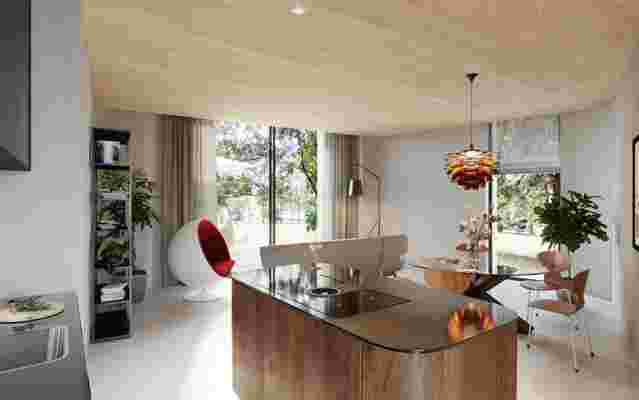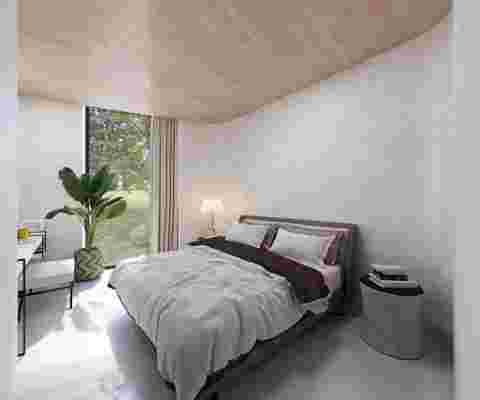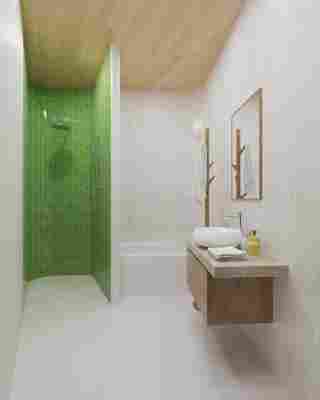Speed has never been a quality associated with building a home, but that may be changing. Eindhoven University of Technology plans to build five 3D-printed houses in the new residential district of Bosrijk. The endeavor, known as Project Milestone , was initially announced during Dutch Design Week in 2016 as a partnership between the University and Municipality of Eindhoven and is billed as the world’s first commercial housing project using 3D-concrete printing. Among the collaborators that have come on board since then is the local firm Houben / Van Mierlo Architects, which created the organic-inspired design.

A look at what a single unit kitchen would entail in one of the 3D printed homes.
While concrete tends to be rigid and angular, the firm’s design takes advantage of the 3D-printing technology to create fluid structures that resemble boulders sitting in a clearing. A special concrete composition, which does not need steel reinforcements, was developed for the printers. The process also allows the builders to create precise details and only lay concrete where it is needed, instead of pouring solid forms that use excess materials and release more carbon dioxide. The use of 3D printing could also potentially increase the rate of production and reduce labor cost and human errors.

A rendering of one of the bedrooms in the homes.
The houses will be built one at a time, so that the experience of building each home can inform the process going forward. The first house will be a single-story, three room structure, which will be printed in pieces at the University. The other houses will have multiple stories and feature printed-concrete floors and roofs. The team will work towards building the final home using an on-site concrete printer.

The bathroom will include splashes of color, including the tiles used in the shower.
The first home is due to be completed in 2019. The houses will be move-in ready with fully outfitted kitchens and bathrooms and will operate as a rental properties. The organizers hope that the project will lead to the widespread use of 3D-concrete printing, meaning that faster homes could be on their way.
